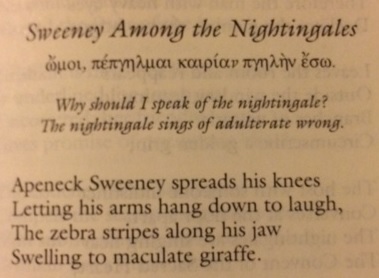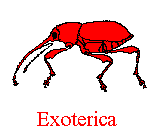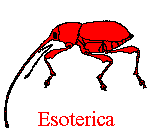A few weeks ago, Laudator Temporis Acti blogged about a translated novel set in a Greek classroom, in which the Greek was badly botched. As he noted, “You’d think that, in a short novel that takes place inside a Greek class, words quoted in Greek letters would be printed accurately.” My example is less embarrassing in one way, in that the Greek is not from a Greek class, but more embarrassing in another, in that the Library of America should be able to hire proofreaders who can handle Greek quotations. After all, their professed aim is “to curate and publish authoritative new editions of America’s best writing, including acknowledged classics, neglected masterpieces, and historically significant documents and texts”, and “authoritative” is a high standard.
This is the beginning of T. S. Eliot’s “Sweeney Among the Nightingales” in the Library of America volume American Poetry: The Twentieth Century, Volume 1: Henry Adams to Dorothy Parker (2000), page 739:

For the Greekless, it should say ómoi péplegmai kairían plegèn éso, but the editor or typesetter has reversed both of the leg sequences to gel to make the unintelligible (not just to the Greekless) and unpronounceable ómoi pépgelmai kairían pgelèn éso. (I’ve underlined the etas and omegas – long Es and long Os – since there’s no room for a macron and an accent on the same letter in HTML Roman script.) Minuscule gamma (γ) does look very much like an upside-down (mirrored, not rotated) lambda (λ), so it appears that some kind of vertical dyslexia may be at work. Most dyslexia seems to involve horizontal scrambling of letters, so this (if it is not a strange coincidence) is new to me.


